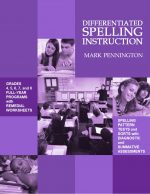How to Eliminate Passive Voice
“What does Ms. Stark’s comment mean here on my essay?” asked Bella. “It says, ‘Make your subjects do something.’”
“She’s telling you to use the active voice in your essays,” I explained.
“Can’t my subjects take a rest and let the verbs do something for them once in a while?”
“Very funny, but I’d take her advice.”
Definition and Examples
Verbs have two voices: active and passive:
- In the active voice the subject of the sentence acts upon the verb. For example, in “The students noticed her mistake,” the “students” (the subject) acts upon the verb, “noticed.”
- In the passive voice the subject of the sentence is acted upon by the verb. For example, in “Her mistake was noticed by the students,” the “students” (the subject) receive the action of the verb.
Read the rule and revision strategies.
Use verbs in the active voice to emphasize the importance of the action, rather than that of the subject, or when the passive voice is required to show scientific objectivity. To change the passive voice into active voice, try these 3 strategies:
- Place the subject of the sentence before its predicate (unless the sentence is a question).
- Eliminate the helping verbs and change the verb form if necessary.
- Eliminate the prepositional phrase beginning with the by
Write these sentences and [bracket] the passive voice verbs.
- I’m afraid that your phone has been damaged by that spilled drink.
- Ms. Slavin’s test was failed by the majority of the students who failed to study.
- The purpose of the assembly is still being evaluated by Student Council, but most students support anything that will get them out of class.
- By the time they arrive, the choices will already have been made.
- If the decision is left to her, she will choose what has been done countless times before.
Change the passive voice verb to active voice.
The passive voice is to be avoided by you if it can be helped.
*****
For more essay rules and practice, check out the author’s TEACHING ESSAYS BUNDLE. This curriculum includes 42 essay strategy worksheets corresponding to teach the Common Core State Writing Standards, 8 on-demand writing fluencies, 8 writing process essays (4 argumentative and 4 informative/explanatory), 64 sentence revision and 64 rhetorical stance “openers,” writing posters, and helpful editing resources.
Differentiate your essay instruction in this comprehensive writing curriculum with remedial writing worksheets, including sentence structure, grammar, thesis statements, errors in reasoning, and transitions.
Plus, get an e-comment bank of 438 prescriptive writing responses with an link to insert into Microsoft Word® for easy e-grading (works great with Google Docs),
Download the following 24 FREE Writing Style Posters to help your students learn the essay rules. Each has a funny or ironic statement (akin to “Let’s eat Grandma) to teach the memorable rule.













